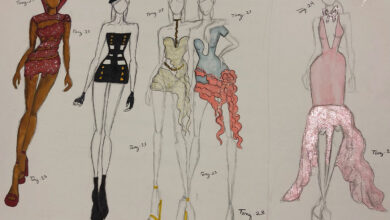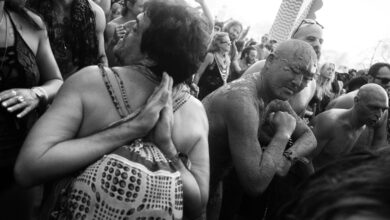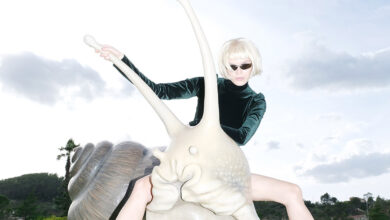The World Through Polka-Dotted Lenses: Paris’ Centre Pompidou celebrates the visionary world of Japanese artist Yayoi Kusama with the first French retrospective dedicated to her.
Text by Anna Battista
“One day I was looking at a red flower-patterned table-cloth on a table and, then when I looked up, I saw the ceiling, the window panes and the pillars completely covered with the same red flower patterns. With the whole room, my whole body and the whole universe covered entirely with the flower patterns, I would slide towards self-obliteration…and be reduced to nothingness (…). I was stupified (…) painting was the only way to keep myself alive, or on the contrary was a fever that drove me to despair.” Yayoi Kusama
Repetition and accumulation are the main key words to understand Yayoi Kusama’s visionary works. A new exhibition – the first French retrospective about Kusama, mainly focused on sculptures and on the artist”s use of colour – recently opened at Paris’ Centre Pompidou.
The exhibition is arranged in a chronological order so, after passing through an ordinary living room covered in fluorescent polka dots, the visitors are introduced to Kusama’s early works. The latter betray her classical formation at Kyoto’s School of Art, even though some paintings such as “Phosphorences in the Daytime” (1950) and “God of the Wind” (1955) already show a certain degree of hallucination.
The next gallery focuses instead on the American period, from 1958 to 1973: when Kusama moved to New York she started experimenting with matter and with monochrome “Infinity Nets” (some of them are 10 metres long) characterised by exaggerated brushstrokes.
As the years passed, the artist introduced colour turning the “infinity nets” she would see in her hallucinations and daydreams into mesmerising patterns characterised by bright tones of yellow, red or fuchsia (“Infinity Nets on Yellow”, 1960, and “The West”, 1960).
In 1961, as Kusama started experimenting with sculpture, seriality, accumulations and assemblages became her main preoccupations. Collages of banknotes (1962-63) and airmail stamp stickers (1963) are just two examples of this technique that she took to a further state of hallucination with the installation “Aggregation: One Thousand Boats Show” (1963), a real life boat covered in phallic forms framed in a black box, in a series of textile sculptures including tables, sofas and chairs covered in phalluses and arranged on a sea of macaroni, and in various garments such as coats and shirts covered in plastic flowers and turned into unwearable works of art through a process similar to bronzing.
A series of videos explore Kusama’s public performances, activist protests, feminist performances and transgressive happenings in the streets of New York, among the others “Self-Obliteration” and “Body Festivals”, in which polka-dots literally obliterate her naked body.
In 1973 Kusama returned to Japan in a fragile state of mind and the next section of the exhibition introduces different works from the ‘70s to the present day that show through the mix of materials, shapes and colours employed, the artist’s troubled mind.
This section features large paintings, phallic landscapes super spielautomaten . that turn into accumulations of polka-dotted tentacles and soft sculptures such as “Clouds” (1982) that connect her to the explorations of the tactile spaces as carried out by artists such as Dorothea Tanning, Louise Bourgeois and Eva Hesse.
Kusama’s visionary environments bring instead visitors in touch with the universe: upon stepping into her disturbingly mind-bending installations such as “Dot Obsession” (1998) and “Infinity Mirrored Room” (2011) with dots replicated on objects, floors and walls or with tiny dot-like lights infinitely reflecting on mirrors, visitors find themselves completely immersed in a multi-sensory space becoming the protagonists of the artist”s performances and of her psychotic obsessions.
The exhibition closes with 31 new paintings that show Kusama’s return to calligraphy and ideograms and to the origins of the Oriental tradition: some of her new paintings link her to explorations of the cosmos via recurrent symbols such as the eye (for example “I want to live honestly like the eye in the picture”, 2009, or “Eyes of Mine”, 2010).
While explaining how she came up with her “Infinity Nets”, Kusama stated: “My life is a dot lost among thousands of other dots”. Yet being a painter, sculptor, performer and a representative of psychedelic and body art, Kusama”s dot is a special multi-coloured atom brightly shining in the contemporary art scene.
“Yayoi Kusama” is at the Centre Pompidou until 12th January 2012. After Paris, the Kusama exhibition will move to Madrid, London and New York.
All images copyright Yayoi Kusama















